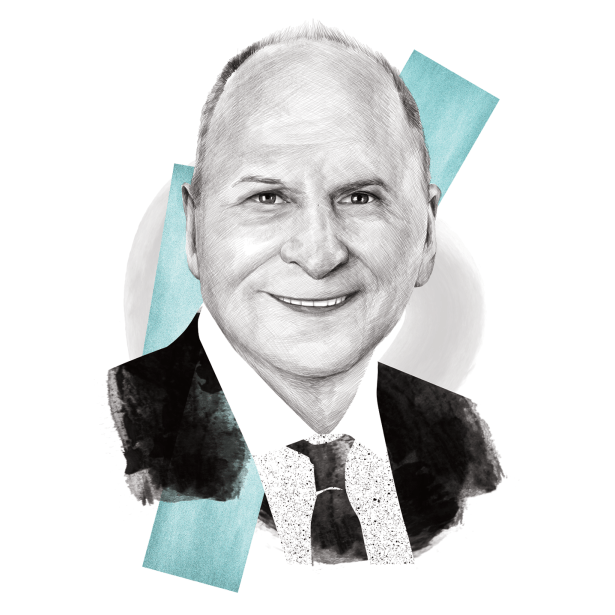
Tom Whitesell
Head of Debt Investment Group at Kennedy Wilson

Describe the past 12 months in one word, then tell us the key lending opportunities you and your team have uncovered.
Fortunate. We were fortunate to move our whole national CRE team from Pacific Western Bank to Kennedy Wilson last July. The two cultures blended perfectly, and we hit the ground running. Since banks pulled back, we were one of the few active lenders in the non-recourse construction space. The fact that we can hold larger loans without syndication, and we don’t require deposits (since we are no longer a bank), has kept us very busy, particularly with larger, national sponsors who need to capitalize multiple projects in various markets around the country. We’ve also had great success in the student housing space: Of the roughly $3.5 billion of new construction loans we will have closed by year-end, just under $1 billion represents purpose-built student housing construction loans at major universities around the country.
Are rate cuts the silver bullet the industry has been waiting for to solve all woes?
They are not. Lower rates certainly help lubricate the markets and ideally lead to more transactions, but we’re not likely to see rates drop to their historic pre-pandemic lows. There is still a lot of debt maturing with those lower rates that will not be able to be refinanced without a cash infusion. There are plenty of investors ready to provide that gap or rescue capital, but that will only solve some of the problems. Also, both investors and lenders will have to navigate the value destruction in the office sector, and that drag on balance sheets will be a cloud blocking much of the sunshine that might otherwise come from declining rates.
How long will nonbank lenders continue to take increased market share?
It seems like the banks will still largely be on the sidelines for a while in construction as they navigate the distress in their portfolios. Capital charges are also higher, so the nonbank lenders, particularly in the construction space, should continue to grab outsized market share. The bridge financing space is quite crowded (and is also an area where the banks can selectively compete even now). The money center banks are putting capital to work in the CRE space by providing leverage to nonbank lenders, but that only means increased opportunities for nonbanks.
How does distress continue to play out in 2025, and how can lenders best protect themselves?
Distress always takes time to get through the system. I think the regulators will put more pressure on banks to properly mark their loans, after having given them post-pandemic leeway to somewhat extend and pretend. This will help in price discovery, largely in the office sector, as assets and loan portfolios come to market. It’s an interesting time because there is a ton of opportunistic dry powder waiting to be deployed, but the bid-ask needs to narrow. Kennedy Wilson’s Debt Investment Group is certainly keeping an eye out for opportunistic equity and debt acquisition opportunities, while continuing to focus on our core business of originating multifamily and student housing construction loans.
Who lent you your very first buck, and what was it for?
My older brother, for a portion of the down payment on a condo.
Are you still as enthusiastic about multifamily as you were three years ago?
Yes. The primary reason we are focusing on the housing sector in our credit platform is the fundamental shortage of housing that still exists in America. There are certain markets that have a current oversupply of rental apartments, but these units will lease up at some point, the only question is at what rent. So we are being vigilant about our underwriting and the markets where we choose to invest, but we have firm conviction in the long-term viability of the housing sector.
Have you taken any keys back this year?
Fortunately, our construction loan book is exceptionally safe and strong. Since the establishment of our program in 2015 at Pacific Western Bank, we have had zero losses and no risk of impairment. We have not had to take the keys on any assets, and, given our position in the capital stack and the quality of sponsorship, it is highly unlikely we ever will.
Lighting Round:
AI: Helpful or fad?
Not a fad. Likely helpful, potentially very harmful.
Will interest rates be below or above 4 percent on July 1, 2025?
Above.
Who will win the presidential election (not who you want to win)?
Harris.
How many days are you in the office today?
Four, soon to be five.
Modify or foreclose?
Depends on the situation, but generally … modify.
Pref equity or mezz?
As a senior lender, agnostic. But lean in favor of mezz.
Class B office: Tear down and start over, or convert?
Convert, if possible, but most don’t work physically or financially.






